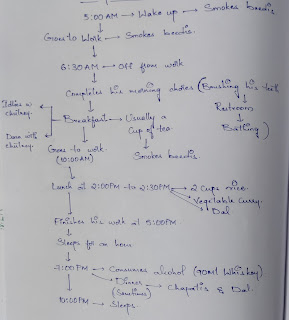MY EXPERIENCE WITH GENERAL CELLULAR AND NEURAL CELLULAR PATHOLOGY IN A CASE BLENDED LEARNING ECOSYSTEM (CBBLE)
My very first encounter with a patient was in december 2021 from the general medicine department. I entered the AMC and approached a patient who was laying on a bed in the cubicle with a lot of nervousness because i had no prior experience of starting a conversation and approaching a patient.
I introduced myself as a medical student and she was quite irritable in the beginning as i expressed my intention to understand her condition better, which could improve her treatment, she welcomed my presence and began sharing her journey by sharing her symptoms.
She told tjat the past few days had been marked by a profound sense of weakness, accompanied by a significant decrease in urine output raising concerns about her renal function. Additionally, she described experiencing SOB, which had intensified over the last 24 hours. She developed Cough with sputum of a yellowish hue occasionally tinged with blood. Thankfully, she had not experienced any fever, chills, or rigors, but the relentless fatigue had taken a toll on her overall well-being.
Carefully observing her physical appearance, I found the pallor land the presence of pedal edema which was pitting in nature, indicating possible fluid retention. These physical manifestations, coupled with her symptoms, raised further concerns about her condition.
Delving deeper into her medical history, i learned that she had no previous instances of similar complaints. Her past medical records revealed no history of diabetes, hypertension, tuberculosis, epilepsy, or asthma. Similarly, her family history provided no relevant insights into her current predicament.
The subsequent physical examination revealed findings consistent with her complaints, such as decreased breath sounds and positive bronchial breath sounds over the affected lung. Her X-ray showed hazyness in the costephrenic angle which confirmed the presence of a pleural effusion. adding another layer of complexity to her case.
Further investigations into the patient's condition included liver and renal function tests, which yielded abnormal results. the renal function tests showed abnormal values. The patient's urea level was elevated at 45 mg/dL (normal range: 12-42 mg/dL), and her creatinine level was significantly elevated at 5.8 mg/dL (normal range: 0.9-1.3 mg/dL). These findings indicate impaired renal function and suggest the presence of chronic kidney disease (CKD).
Additionally, the liver function tests revealed elevated levels of AST (aspartate aminotransferase), ALT (alanine aminotransferase), and alkaline phosphatase. These findings suggest liver dysfunction or damage, indicating underlying liver pathology.
https://radheshmahankali131.blogspot.com/2021/12/57-year-female-with-decreased-urine.html?m=1
Considering the gathered information, a provisional diagnosis of chronic kidney disease (CKD) with right-sided pleural effusion was formulated. The treatment plan was tailored to address these conditions comprehensively. It included interventions such as a pleural tap, head elevation, oxygen supplementation if necessary, fluid and salt restriction, antibiotics, diuretics, and supportive medications.


Comments
Post a Comment